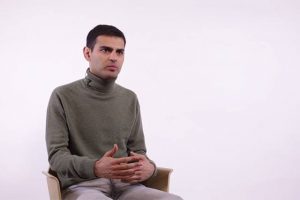Standard Model
Physicist Jonathan Butterworth on history of the Standard Model, its core principles and the role of the Higgs...
What is the Casimir Effect? What is Casimir Light? Robert L. Wallace Professor of Applied Physics and Vinton Hayes Senior Research Fellow in Electrical Engineering at Harvard University, Federico Capasso, on the seemingly paradoxical Casimir Effect.
The phenomenon is very simple. If you have two metallic surfaces and you put them a very short distance apart, and you’re in a vacuum, and there are no charges on the metallic surface. The plates do not pull together, right? Wrong.
What is the physical origin of the quantum mechanical forces. Quantum mechanics says there is no real vacuum. Even in a vacuum there is constant activity. We have particles that pop in and out from the vacuum, photons and other stuff. You can show that this popping in and out causes two metallic plates to attract each other at short distances.
Friction is often treated as just a dirt problem. Many physicists don’t want to touch friction. But in reality there is a fundamental component. Friction between surfaces is affected by quantum fluctuation. So what we proposed after this work was to make new kinds of bearings. If we can separate mechanical parts by certain fluids and we can induce this repulsive force, we can reduce friction. So the big picture is to make novel nano machinery that allows us to control friction. Starting from a fundamental level, and we have just taken the first steps. The experiments are very hard.

Physicist Jonathan Butterworth on history of the Standard Model, its core principles and the role of the Higgs...

Matematician Hadi Godazgar on the Big Bang, black holes, and the Information Paradox

Inspired by nature, researchers come up with a new way to transmute the most abundant gas in the atmosphere un...